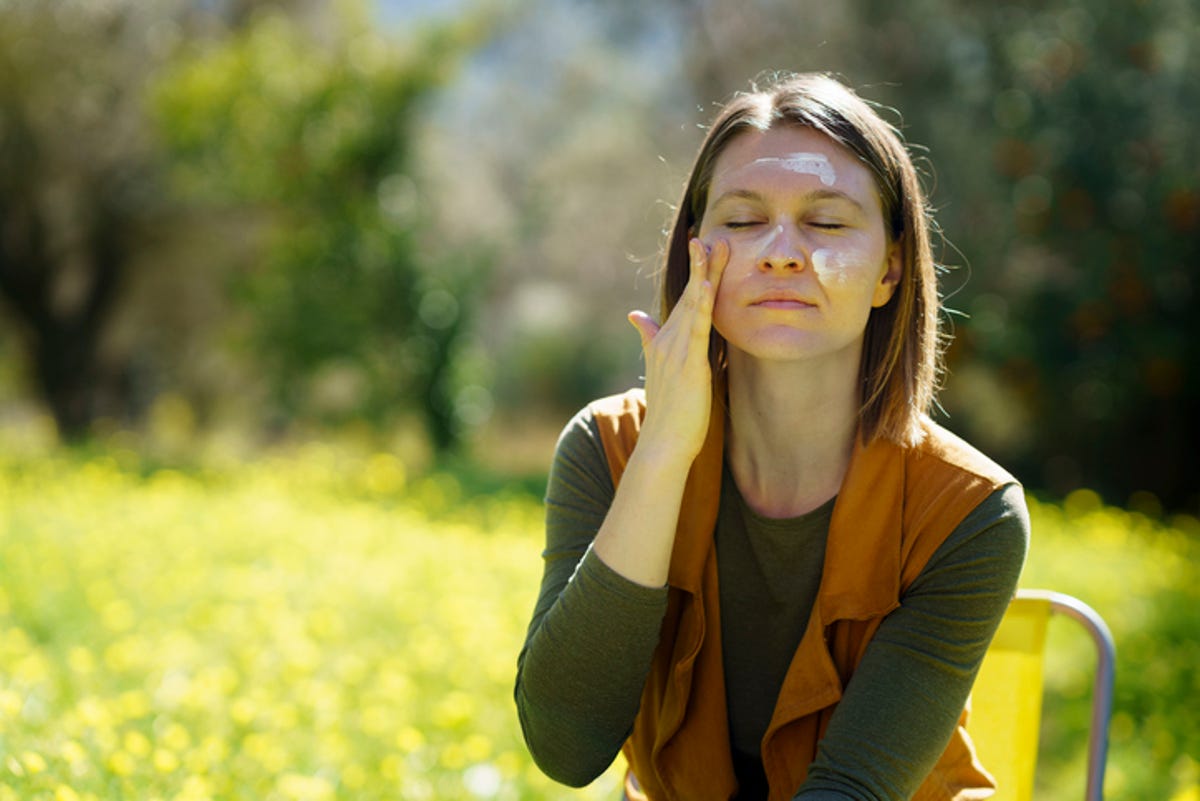There are many misconceptions about sunscreen—what type you need, how much you need to apply, and when you should apply it. But believing everything you hear might spell bad news for your skin. When it comes to protecting your skin from harmful sun damage that can lead to sun poisoning, blisters, and cancer, sunscreen is your best line of defense.
It’s important to get this right this summer. Let’s separate fact from fiction and debunk some common sunscreen myths so you can protect your skin.
read more: The best sunscreen to protect your skin
Top 10 Myths About Sunscreen Lotion
1. All sunscreens are the same
Yes, the goal of all sunscreens is to protect your skin from sun damage. But each product works differently, depending on its ingredients and level of sun protection.

Sunscreens are usually divided into two categories – chemical sunscreens and physical sunscreens. Chemical sunscreens contain avobenzone and oxybenzone, which absorb the sun’s rays and convert them into heat. Physical sunscreens, also known as mineral sunscreens, contain ingredients like zinc oxide and titanium oxide that reflect light. The ingredients in sunscreens determine how well they protect your skin from the sun.
2. The higher the SPF value, the better
You might think that the higher the number, the more protection you have. But this is not always the case. SPF 50 blocks approximately 98% of UV rays. SPF 100 only blocks 99%, which is a slight difference. I’m not saying you shouldn’t use SPF 100, just remember that no sunscreen can give you complete sun protection. Higher SPF values often give people a false sense of security about sun protection, leading to skin damage.
What do the numbers on your sunscreen bottle mean? SPF stands for Sun Protection Factor and is a measure of how long a sunscreen protects against UVA and UVB rays. This metric is based on how long it takes for your skin to burn in the sun without protection. Said it would take 30 minutes. If you apply SPF 30, it will take 30 times longer – 300 minutes in total.
I caution that these numbers are determined in a lab through flawless application and do not take into account factors like sweat, skin oils, or accidental wiping of product. The American Academy of Dermatology recommends using broad-spectrum, SPF 30 or higher products and reapplying every 2 hours.
3. Wear makeup and sunscreen to protect your face
Using a moisturizer or makeup containing SPF is a great way to increase your sun protection. But this is not enough to provide adequate sun protection. When testing, skin care products companies will test a thick layer of product to determine the SPF. In fact, if you only apply a thin layer of product, you may not get all the SPF value on the bottle.
People vary greatly in the way they apply makeup, so that’s enough. Makeup with SPF is a great complement, not a replacement for sunscreen.
If you’re wondering how on earth to apply sunscreen after you’ve put on makeup, you can use a beauty sponge to apply sunscreen over your makeup, or buy powdered sunscreen, e.g. Colorscience Brush-on Sunscreen.
read more: Best sunscreen for face
4. Waterproof sunscreen does not need to be reapplied
Tell me if this sounds familiar from childhood: Your mom would put sunscreen on you by the pool and let you sit there and wait for it to dry before jumping in. This is the longest wait of your life.
Turns out your mom was right. Here’s the thing about waterproof sunscreen – it’s not really waterproof. According to the American Academy of Dermatology, there is no such thing as waterproof sunscreen. Sweat and water always wash sunscreen off your skin.
That’s why it’s important to wait 10 to 15 minutes after applying sunscreen before getting in the water. You should reapply every 2 hours even if you are not in the water.

5. Dark skin doesn’t need sunscreen
Melanin does provide Some Provides natural sun protection by diffusing UV rays. However, people with darker skin tones can still develop wrinkles, hyperpigmentation, sun damage, and skin cancer. A study published in the Journal of the American Academy of Dermatology found that people with darker skin tones tend to have lower survival rates from skin cancer, so everyone needs to wear sunscreen. It’s worth noting that people with darker skin tones tend to have lower survival rates because they are often diagnosed with deficiencies, not just because of their skin color.
6. You only need to wear sunscreen when it’s sunny
Some people think sunscreen is not needed because the sun is behind the clouds. But let me ask you, what is the cloud? If you guessed that there is water vapor suspended in the air, you would be right. While clouds can reduce the amount of sunlight reaching the skin, they are not of sufficient quality to completely block sunlight. More than 90% of UV rays pass through clouds. Even if it’s cloudy, it’s best to put on sunscreen.
7. Wearing sunscreen will lead to vitamin deficiency
Vitamin D is an essential vitamin produced when proteins in our skin react to the sun’s UVB rays. Essentially, we need sunlight to produce the necessary amounts of vitamin D for our bodies to absorb calcium and phosphorus. Even if the package says SPF 100, no sunscreen can block 100% of the sun’s rays. You’ll still be exposed to about 2% to 3% of UVB rays, enough for your body to produce vitamin D.
8. You can tan as long as you don’t get sunburned
Safe tanning bases are a myth. The skin darkens to protect itself from further damage from UV rays. A tan does not protect you from the sun and is a sign of skin damage.
Ultraviolet radiation is a human carcinogen. Even if you don’t get a sunburn, unprotected sun exposure can increase your risk of skin cancer. A basic tan at a tanning salon can still cause damage to your skin.

9. Sunscreen is not good for your skin
Discussions about sunscreen safety largely involve oxybenzone and other chemical ingredients in some sunscreens. There is ongoing debate about the health risks of using chemicals in sunscreen. Although the FDA has not found significant evidence that chemical sunscreens are harmful, more research is needed to draw conclusions. A study published in JAMA Network found that six of 13 ingredients in chemical sunscreens currently under consideration by the FDA are absorbed and detectable in the blood within three weeks of use.
In addition, some sunscreen lotions contain ingredients such as fragrances, which may irritate sensitive skin or cause allergic reactions. You can avoid this by choosing a sunscreen specially formulated for sensitive skin.
10. Sunscreen does not expire
If you’ve ever used old sunscreen and sprayed the separated mixture onto your hands, you know firsthand that sunscreen expires. Over time, these ingredients break down and become less effective.
This doesn’t mean you have to buy sunscreen every year. According to FDA regulations, sunscreen must maintain the same effectiveness for at least three years. Therefore, you can use the same tube of sunscreen for years; just pay close attention to the expiration date listed on the bottle. You should not store sunscreen in direct sunlight or where temperatures are too high. Storing it in your car is not a good idea.
Too long; haven’t read it?
There are many misconceptions about sunscreen, many of which may lead you to make poor decisions for your skin. The bottom line is that sunscreen should be an important part of everyone’s daily routine, especially if you’re going to be spending time outdoors. Reapply every 2 hours.

